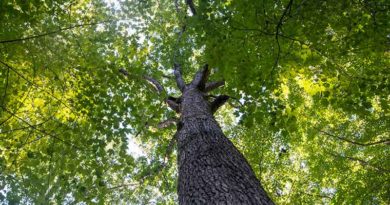NCC: Land Lines – Find the Birds British Columbia location launches
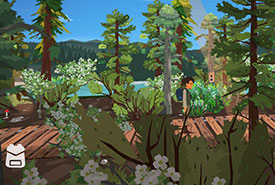
Screen capture of the BC location in Find the Birds game. A player walks along a boardwalk in the midst of a forest. (Photo by Thought Generation Society)
Since its launch six months ago (read my previous blog here), with an initial Arizona simulated birding location, Find the Birds (a free educational mobile game about birds and conservation) now has over 7,000 players in 46 countries on six continents. In the game, players explore realistic habitats, find and take virtual photos of accurately animated local bird species and complete conservation quests. Thanks in a large part to the creative team at Thought Generation Society (the non-profit game production organization I’m working with), Find the Birds is a Canadian-made success story.
You can now explore BC’s Okanagan Valley
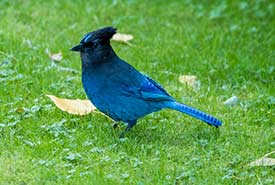
Steller’s jay (Photo by John D. Reynolds/iNaturalist)
Recently, the British Columbia location was added, which features Sawmill Lake in the Okanagan Valley, Tofino on the coast and a journey in the Pacific Ocean. Some of the local bird species included are Steller’s jays (BC’s provincial bird), black oystercatchers and western meadowlarks. Conservation quests include placing nest boxes for northern saw-whet owls and cleaning up beach litter.
I’ve always loved Steller’s jays! We get a lot of them in our backyard. It’s far lesser known bird than blue jay, so I wanted to give them some attention. That’s the terrific thing about being the co-creator of the game: I get to help choose the species, the quests — everything! So all the birds in the BC locations are some of my favourites.
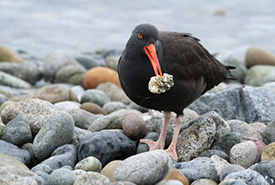
Black oystercatcher (Photo by Tracey Chen, CC BY-NC 4.0)
The black oystercatcher is another underappreciated species. I’ve seen them along the coasts of BC, where they are relatively common. I had a great experience spotting a northern saw-whet owl at night on a deserted road in BC, so I wanted to include it. I could go on about the other species in the BC game location, but I don’t want to spoil the surprise for players. The hard part of choosing content is that I love all species!
What do people think of Find the Birds?
To gauge the game’s impact on conservation education, I recently conducted an online player survey. Of the 101 players who completed the survey, 71 per cent were in the 8–15 age group, which means I am reaching my peers. But 21 per cent were late teens and adults, so the game’s appeal is not limited to children. Fifty-one per cent were male and 49 per cent female: this equality is encouraging, as most games in general have a much smaller percentage of female players.
And the game is helping people connect with nature! Ninety-eight per cent of players said the game increased their appreciation of birds. Eight-five per cent said it improved their bird knowledge and 84 per cent reported it made them birdwatch more. Fifty-six per cent said the game increased their knowledge of conservation and 47 said they volunteered with real-world conservation organizations because of playing the game. The average player rating was 4.5/5 stars.
I’ve really been encouraged not only by the survey results but also emails and comments I’ve received. Some players have said this is the best game ever. Others love the art and animation specifically, which are fun and unique, yet accurate enough for people to identify real species. I think Find the Birds redefines what can be done with mobile apps, games and devices, especially in terms of STEAM teaching methods and public awareness campaigns.
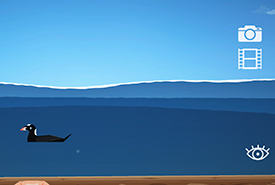
A surf scoter on a pelagic trip (Photo by Thought Generation Society)
We’ve also steered away from collecting player personal information, a rarity in the mobile world, which, everyone appreciates.
As a result of the game’s reputation and the above data, I was invited to present my findings at the 2022 International Ornithological Congress. So, I will be traveling to Durban, South Africa, next August to spread the word on reaching and teaching a new generation of birders, ornithologists and conservationists. To learn more about Find the Birds and to download the game for free for your Apple and Android phones and tablets, please visit findthebirds.com.
The BC game location was made possible by funding from Wildlife Habitat Canada.


